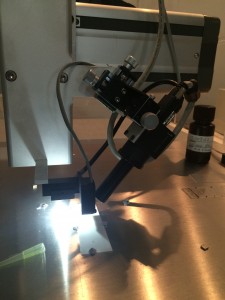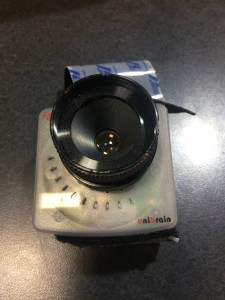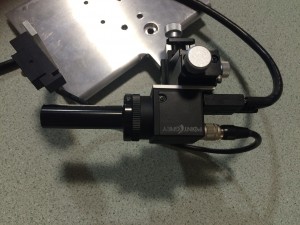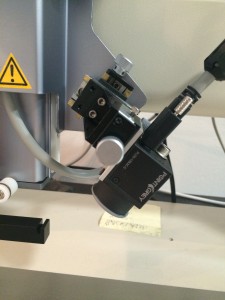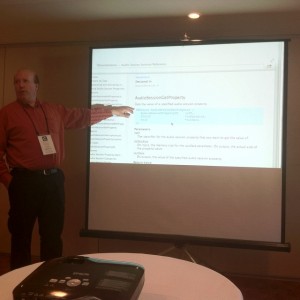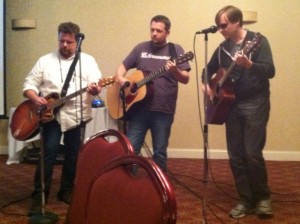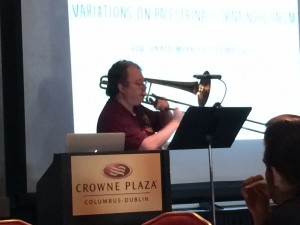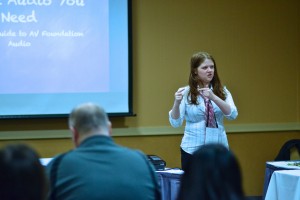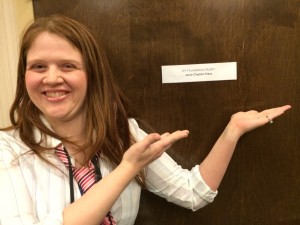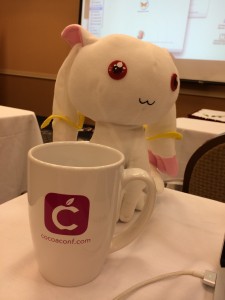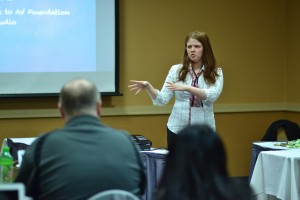Last month my boss, Daniel Pasco, posted this thought on Twitter:
Developers focus on making great code.
Engineers focus on making great things.
This really struck a chord with me. I have observed a few behaviors that I didn’t really have any context to express and I feel like this quote sums up a lot of things that trouble me about the programming community.
Hipster Coding
“Nobody goes there anymore. It’s too crowded.”
– Yogi Berra
I went back to school in earnest to learn programming in 2012. I wasn’t sure what I wanted to do, but I knew I wanted to find whatever would work best for me in the long run. I initially went for Java because I knew there was a lot of demand for it, but I didn’t realize there was also a lot of supply and it was difficult to find an entry level Java job because most of them demanded 3-5 years of experience. I couldn’t break through the layers of bureaucracy and I just stopped trying.
I initially got involved with the Ruby community. I knew a lot of people who were active there and it seemed like it was the new up and coming thing.
I would talk to people about how to get into Ruby and I would be asked what open source projects I worked on. I didn’t really understand open source and would ask for help about how to get into open source. Their looks would immediately change to a combination of disdain and pity and they would stop talking to me because I wasn’t a contributor.
I struggled with this a bit trying to break into Ruby, only to discover that all the people who had been doing Ruby had moved on to Clojure. Then they moved on to Haskell. I think they were interested in Swift for a bit, but I have lost track of whatever the new hot language is. Might be Go…
I think a lot of people feel like they missed out on the Gold Rush of the iPhone. I know that I do. By the time I started taking iOS programming classes in 2012, the whole point of having an app out on the store was to use it as a resume builder to find an actual job. We were being prepared for the world as it exists now/over the next few years where there is less contracting and more enterprise development.
I feel a sense of chasing after something that doesn’t exist anymore. We still have the dream of writing a killer app and making mad bank, but that is growing more and more difficult. I feel like any time Apple releases a new piece of hardware, like the Apple Watch or the Apple TV, people feel like they need to immediately mark their territory on it because they think that if they get there first, they can strike gold and move on before everyone else gets there.
This has created a situation where we have platforms that seem to be abandoned by developers because there is something newer and shinier that has come out and everyone wants to be the first one there.
I Have a Screwdriver and Everything is a Screw
My introduction to programming was back in 2008. I was kind of loafing around unemployed because I had no idea what I was doing with my life. My dad would take me to work and I would go and hang out with the weird IT guy. My nickname for this guy was Jesus because he looked like Jesus if Jesus wore a shirt and tie.
He was really into programming and told me that learning programming was a valuable skill. He set me up with a book and a laptop in the corner. He showed me where the Terminal was and taught me how to write code in TextEdit and compile it on the command line.
All of this was done in Perl.
The book he gave me was the Llama O’Reilly book from I think 1998. He told me that the language was stable and didn’t change, so it was okay that the book was old.
I started telling people that I was learning Perl and I got horrified looks from people telling me no one uses it anymore. I was told to learn PHP because that was the future.
I talked to Jesus about that, and he told me not to bother learning PHP because everything that I want to do I can do in Perl. Perl does everything.
Replace “Perl” with “JavaScript” and that is exactly what we have now for a fairly large portion of the programming community.
I am not going to get into an argument about whether JavaScript is “real” code or not. That isn’t the point I am trying to make. JavaScript is a tool. It has its uses. If I want to write a website, I can’t do that in Swift with the Cocoa frameworks.
What worries me is that I see a lot of people treating JavaScript the way my friend Jesus treated Perl. It’s the thing they know, so they want to make it work for every single possible thing that exists.
There was a great blog post I read recently saying that the state of web development is static right now. Large companies like Yahoo are basically rewriting their websites over and over again in whatever the new hot JavaScript framework is.
I think I read recently that someone created a framework on top of JQuery, which is it’s a framework on top of JavaScript. I think someone tried to create a JavaScript framework to do server back end work. It’s a web language! It was designed to do one thing and one thing well. It’s being convoluted into weird, abstract shapes because people don’t want to learn new things.
Fleeting Fame
“ObjC culture carriers were people who’d been building products for years using it. Swift culture carriers see a chance for fleeting fame.”
– Graham Lee
When Swift first came out, there were a lot of prominent members of the programming community that were incredibly anti-Swift. They had invested 15 years in Objective-C and saw no reason to pick up this goofy new language and get knocked back the the beginning of the board with everyone else.
A lot of us scoffed at these people and told them to get with the program because Swift wasn’t going anywhere.
It’s nearly two years later, and we’re now seeing that a lot of these people have come to terms with the fact that this language isn’t going anywhere.
This doesn’t mean that they are sitting back and figuring out the language. On the contrary. Many of them are just as loud and opinionated about it as they ever were, but now they’re actually trying to use it.
I have noticed a shift in the last six months or so where the people talking about Swift aren’t the early adopters who were coming from Haskell backgrounds who wanted to share their functional programming knowledge. Instead, we’re getting people who feel like they need to have an opinion about Swift to feel important.
Lots of people want to post tirades about how Swift should be done. They don’t want to listen to people who have been working with it for the last few years. That defeats the purpose. They want to be the one who can go and write a convoluted piece of code to break the compiler and have everyone tell them how clever they are.
A lot of the sense of community that I felt back when we had Objective-C has evaporated. Back then, new people could enter the community and have seasoned professionals give them a hand with understanding things. Now, everyone feels like they have to establish themselves as an expert and no one is willing to ask actual questions that would make them better Swift programmers. Their shouting is drowning out everyone else’s thoughts and opinions and making it even more difficult for beginners to actually learn Swift.
How We Should Be Doing Things
I worked for Brad Larson for a year. We spent that year porting a legacy code base from Objective-C to Swift. There were two important reasons for doing this:
- The code base was fragile and at a point where we could not go in and add or change anything without breaking it.
- There were problems that we had encountered over the years that would not have happened if we wrote the code base in Swift.
There was a point when I was working with Brad where he showed me this crazy code that was full of functional programming stuff. I felt very depressed because I didn’t think I could ever come up with something that interesting or complex. It bothered me, so I kept talking to him about it.
After doing this for a while I figured out the right question: What problem is this code solving?
When he started to tell me about how unsafe our previous code was because of the constraints of Objective-C. He had spent years trying to figure out a better solution for his problem and he understood what needed to be done intimately.
Brad is an engineer. He didn’t set out to use all the new toys in Swift because he was looking for an excuse to use them. He had problems he needed to solve and wanted to find the most elegant way of solving them. That solution just happened to include a lot of functional programming concepts. I think he actually rewrote the code a few times because he realized there was a better way to solve the problem.
Code exists as a tool to solve problems. It isn’t an end in and of itself. You can write the most insane Rube Goldergian piece of code imaginable that will work, but why bother?
Writing an app or an open source framework or anything is a little like adopting a puppy. It’s a long term commitment. I don’t think that the people who released the first apps for the iPhone realized they might be on the hook for supporting them for close to a decade. No one anticipated that.
Now that we have a better understanding of that, it’s important to spend time thinking about what your app will solve and how to maintain it long term when it stops being cute and starts peeing on your floor.
One of my goals this year is to release an app. I have done other projects like books and talks, and as such you can take what I say with as many grains of salt as you want. I have been hesitant to produce anything because I worry about the long term maintenance of what I am doing. I know I should just put something out there and learn from my mistakes. We’ll see.
I want to find one, solid piece of functionality that I want to see out in the world. I want to start with whatever the smallest bit of that is and work out from there. I want to keep the scope small and make sure that each piece works and can be built off of to add functionality.
I know that I want to be an engineer. I want to solve problems. I don’t care if no one buys my app or if it is just a tree that falls in the woods where no one can hear it. I just want to know that designed and implemented something well. The problem I need to solve right now is getting over my fear of fucking up and to just do something.


